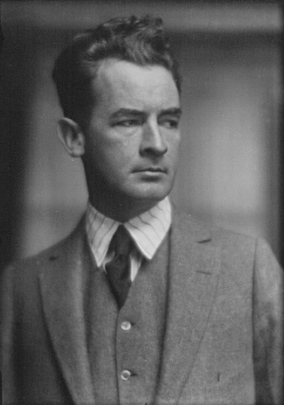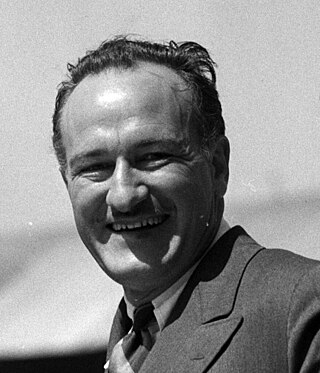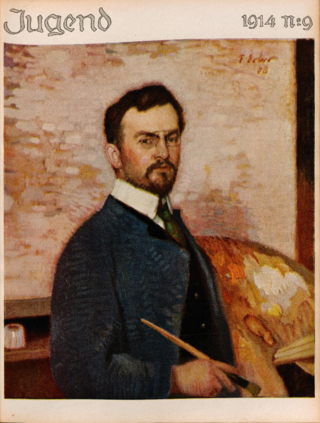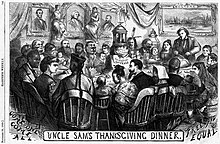American folklore encompasses the folklores that have evolved in the present-day United States mostly since the European colonization of the Americas. It also contains folklores that date back to the Pre-Columbian era.

Big Brother is a character and symbol in George Orwell's dystopian 1949 novel Nineteen Eighty-Four. He is ostensibly the leader of Oceania, a totalitarian state wherein the ruling party, Ingsoc, wields total power "for its own sake" over the inhabitants. In the society that Orwell describes, every citizen is under constant surveillance by the authorities, mainly by telescreens. The people are constantly reminded of this by the slogan "Big Brother is watching you": a maxim that is ubiquitously on display throughout the novel.

Troy is a city in the United States state of New York and is the county seat of Rensselaer County. It is located on the western edge of that county on the eastern bank of the Hudson River just northeast of the capital city of Albany. Troy has close ties to Albany and nearby Schenectady, forming a region popularly called the Capital District although it more accurately is referred to as the Capital Region since there is no "district" per se.

Brother Jonathan is the personification of New England. He was also used as an emblem of the United States in general, and can be an allegory of capitalism. His too-short pants, too-tight waistcoat and old-fashioned style reflect his taste for inexpensive, second-hand products and efficient use of means.
Johnny Reb is the national personification of the common soldier of the Confederacy. During the American Civil War and afterwards, Johnny Reb and his Union counterpart Billy Yank were used in speech and literature to symbolize the common soldiers who fought in the Civil War in the 1860s. The symbolic image of Johnny Reb in Southern culture has been represented in its novels, poems, art, public statuary, photography, and written history. According to the historian Bell I. Wiley, who wrote about the common soldiers of the Northern and the Southern armies, the name appears to have its origins in the habit of Union soldiers calling out, "Hello, Johnny" or "Howdy, Reb" to Confederate soldiers on the other side of the picket line.

James Montgomery Flagg was an American artist, comics artist, and illustrator. He worked in media ranging from fine art painting to cartooning, but is best remembered for his political posters, particularly his 1917 poster of Uncle Sam created for United States Army recruitment during World War I.

John Bull is a national personification of the United Kingdom, especially in political cartoons and similar graphic works. He is usually depicted as a stout, middle-aged, country-dwelling, jolly and matter-of-fact man. He originated in satirical works of the early 18th century and would come to stand for "English liberty" in opposition to revolutionaries. He was popular through the 18th and 19th centuries until the time of the First World War, when he generally stopped being seen as representative of the "common man".

Samuel Wilson was an American meat packer who lived in Troy, New York, whose name is purportedly the source of the personification of the United States known as "Uncle Sam".

The Committee on Public Information (1917–1919), also known as the CPI or the Creel Committee, was an independent agency of the government of the United States under the Wilson administration created to influence public opinion to support the US in World War I, in particular, the US home front.

A national personification is an anthropomorphic personification of a state or the people(s) it inhabits. It may appear in political cartoons and propaganda.

Columbia, also known as Miss Columbia, is a female national personification of the United States. It was also a historical name applied to the Americas and to the New World. The association has given rise to the names of many American places, objects, institutions and companies, including the District of Columbia; Columbia, South Carolina; Columbia University; "Hail, Columbia"; Columbia Rediviva; and the Columbia River. Images of the Statue of Liberty largely displaced personified Columbia as the female symbol of the United States by around 1920, although Lady Liberty was seen as an aspect of Columbia. Columbia's most prominent display in the 21st Century is as part of the logo of the Hollywood film studio Columbia Pictures.

McClelland Barclay was an American illustrator. By the age of 21, Barclay's work had been published in The Saturday Evening Post, Ladies' Home Journal, and Cosmopolitan. He was commissioned as a lieutenant in the Naval Reserve in 1938 and following the Japanese attack on Pearl Harbor he went on active duty. At the time of his death, in 1943, he was a Lt. Commander.

Uncle Sam is a superhero appearing in American comic books published by DC Comics. Based on the national personification of the United States, Uncle Sam, the character first appeared in National Comics #1 and was created by Will Eisner.

Lord Kitchener Wants You is a 1914 advertisement by Alfred Leete which was developed into a recruitment poster. It depicted Lord Kitchener, the British Secretary of State for War, above the words "WANTS YOU". Kitchener, wearing the cap of a British field marshal, stares and points at the viewer calling them to enlist in the British Army against the Central Powers. The image is considered one of the most iconic and enduring images of World War I. A hugely influential image and slogan, it has inspired imitations in other countries.

The Uncle Sam Memorial Statue is a statue commemorating Samuel Wilson, perhaps the original Uncle Sam, near his birthplace in the center of Arlington, Massachusetts, United States. It was sculpted by Theodore Cotillo Barbarossa. It is located on Mystic Street, across from the Cyrus Dallin Art Museum, and adjacent to the Minuteman Bikeway.
John Emmet Sheridan was an illustrator well known in his lifetime for his cover art for The Saturday Evening Post, his illustrations for Collier's Weekly and Ladies' Home Journal, and his commercial advertisements. He is "credited with the idea of using posters to advertise college sports." Sheridan was a member of the Dutch Treat Club, and a frequent contributor to the program of their annual banquet and show, and was an instructor at New York's School of Visual Arts at the time of its founding.
The Departmental Reorganization Act, also known as the Overman Act, was an American law that increased presidential power during World War I. Sponsored by Sen. Lee S. Overman, a Democrat from North Carolina, it gave President Woodrow Wilson sweeping powers to reorganize government agencies "during the continuance of the present war and for six months after the termination of the war by the proclamation of the treaty of peace, or at such earlier time as the President may designate." With its authority, Wilson created the War Industries Board, the National War Labor Board, and the Committee on Public Information.

Fritz Erler was a German painter, graphic designer and scenic designer. Although most talented as an interior designer, he is perhaps best remembered for several propaganda posters he produced during World War I.
Brother Jonathan was a weekly publication operated by Benjamin Day from 1842 to 1862, and was the first weekly illustrated publication in the United States.

Samuel Wilson is a fictional character portrayed by Anthony Mackie in the Marvel Cinematic Universe (MCU) media franchise, based on the Marvel Comics character of the same name and known commonly by his original alias, the Falcon. Wilson is initially depicted as a veteran United States Air Force Pararescueman who specializes in the use of an advanced jet pack with articulated wings. A skilled combatant and tactician, Wilson becomes a close friend of Steve Rogers after assisting him during the Hydra uprising, later being recruited by him to join the Avengers.





















